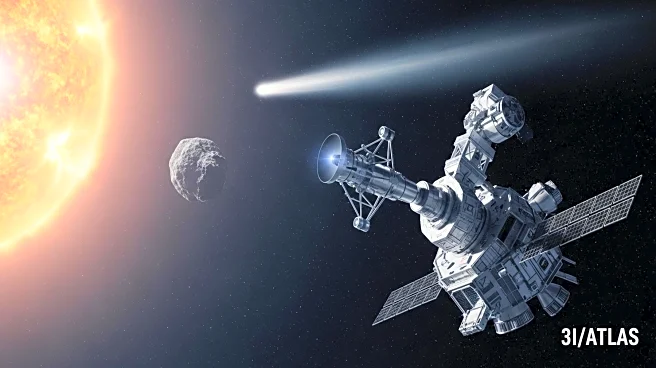What's Happening?
NASA scientists have discovered a mysterious surge in ozone levels within Mars's north polar vortex, offering rare insights into the planet's atmospheric history. The extreme cold and darkness within the vortex lead to an unexpected rise in ozone levels, which could reveal whether Mars once had a protective ozone layer similar to Earth's. This discovery is crucial for understanding Mars's past atmospheric conditions and its potential for sustaining life.
Why It's Important?
The presence of ozone in Mars's polar vortex suggests significant differences in atmospheric reactions compared to Earth. Understanding these processes could provide valuable information about Mars's climatic history and its potential for habitability. The discovery has implications for future Mars exploration missions, such as ExoMars, which aim to search for signs of ancient life. Insights into Mars's atmospheric dynamics could enhance the focus and findings of these missions.
What's Next?
Future Mars exploration missions will continue to investigate the planet's atmospheric conditions and search for signs of past life. The study of the polar vortex and its impact on ozone levels will inform these efforts, providing a clearer picture of Mars's potential for habitability. Researchers will need to develop innovative techniques to study the planet's atmosphere during periods of darkness, overcoming challenges posed by the absence of sunlight.
Beyond the Headlines
The discovery of ozone in Mars's polar vortex highlights the complexity of the planet's atmospheric dynamics and the potential for significant climatic shifts. Understanding these phenomena could reshape our view of Mars and its history, offering new perspectives on the planet's ability to support life. The research underscores the importance of continued exploration and study of Mars's atmosphere to unlock its mysteries.










